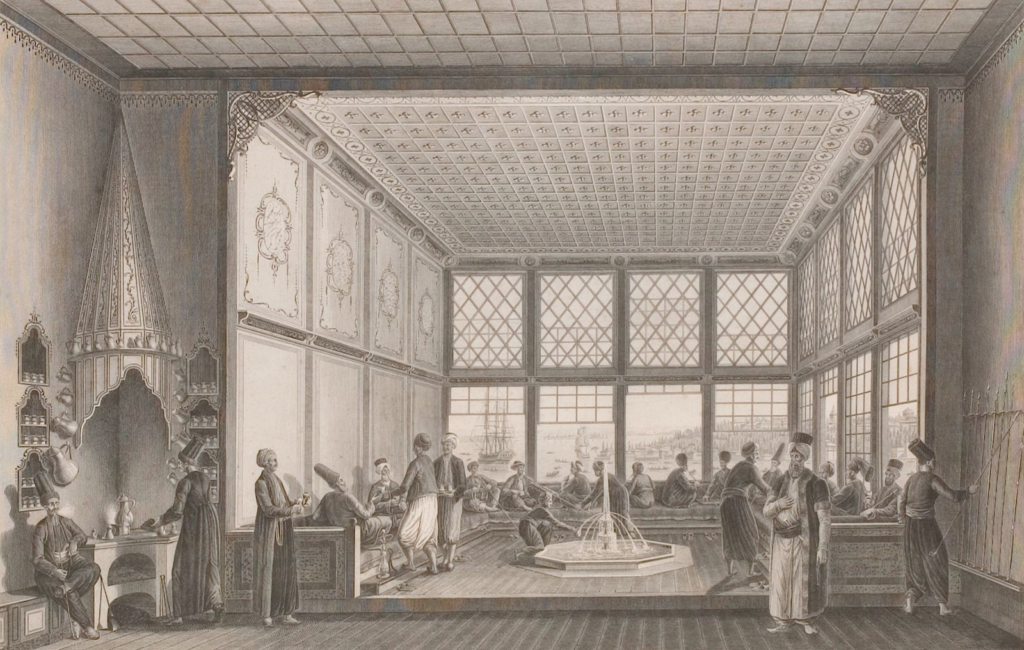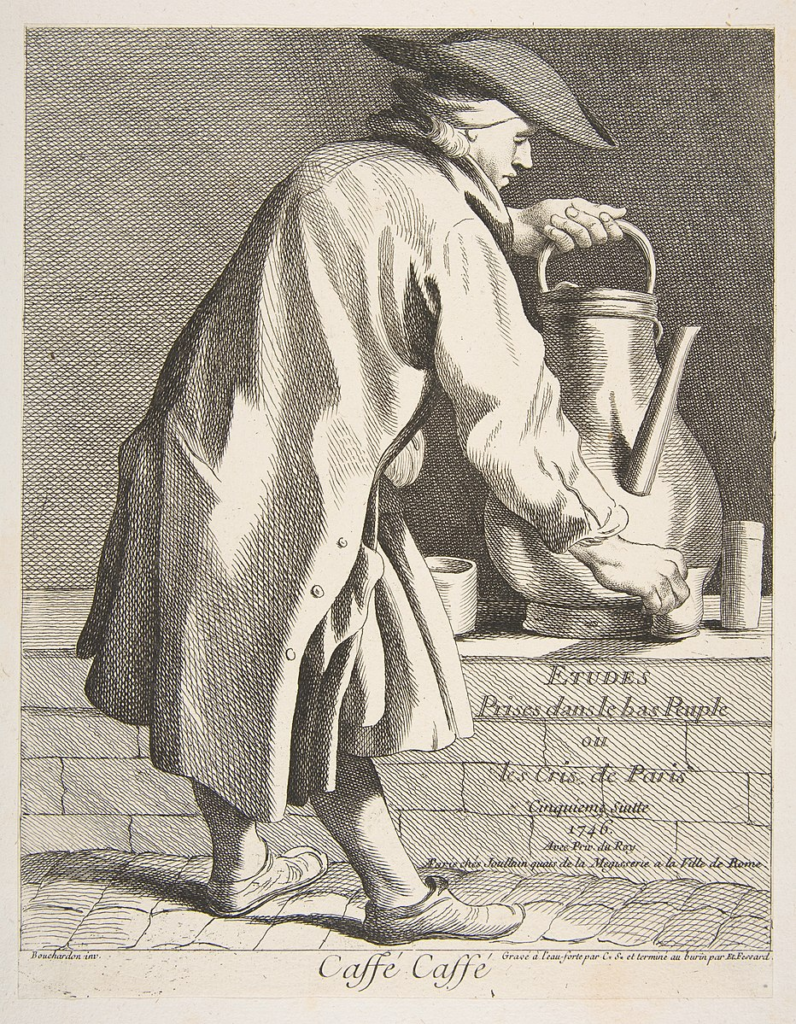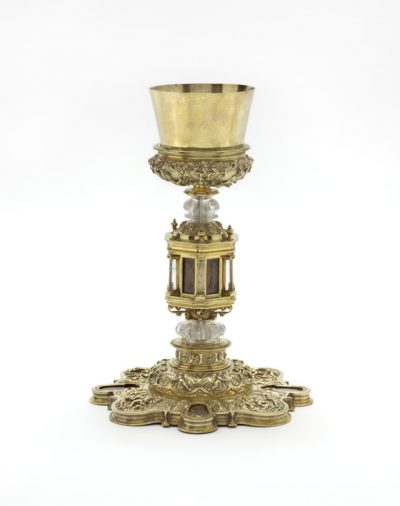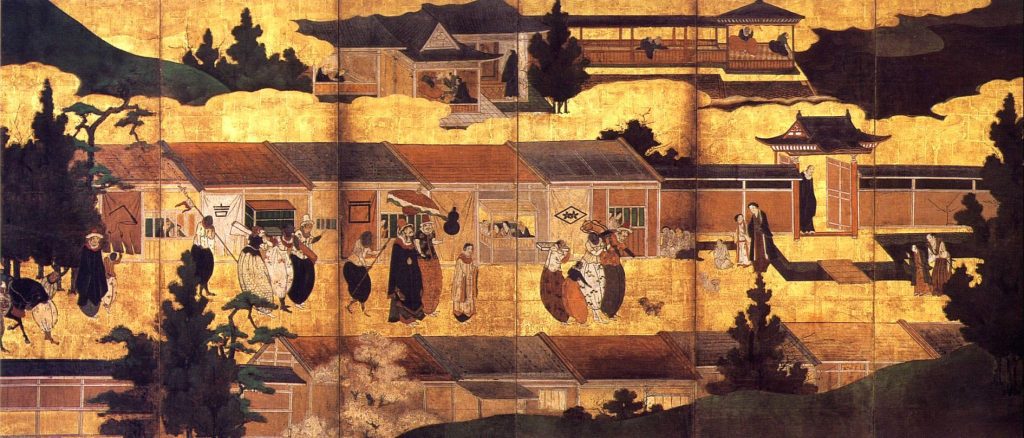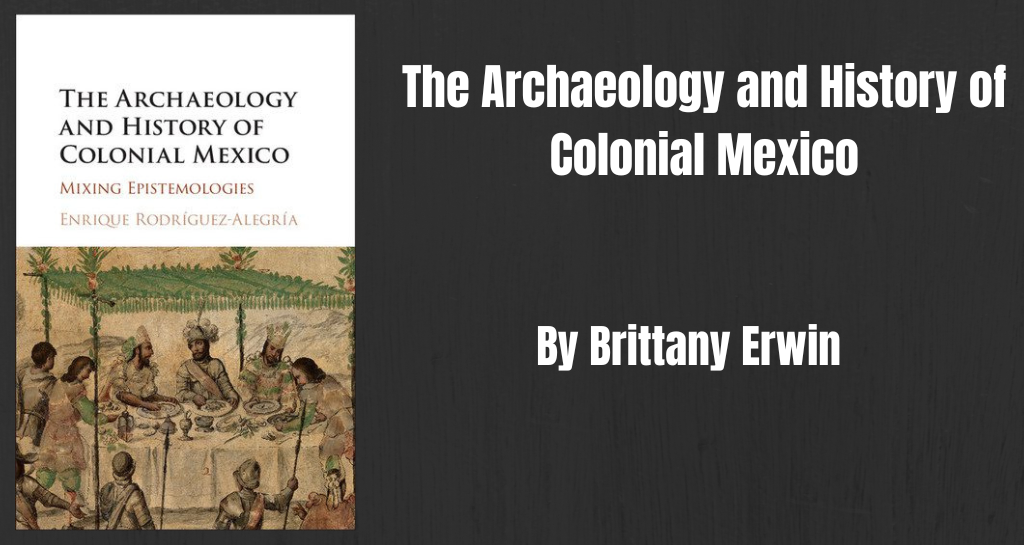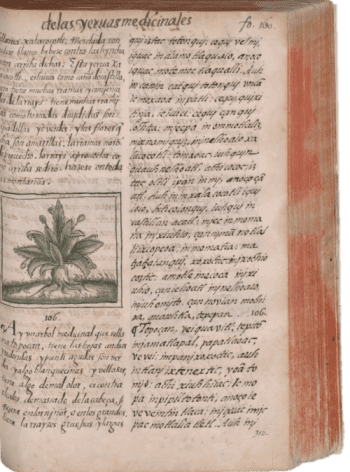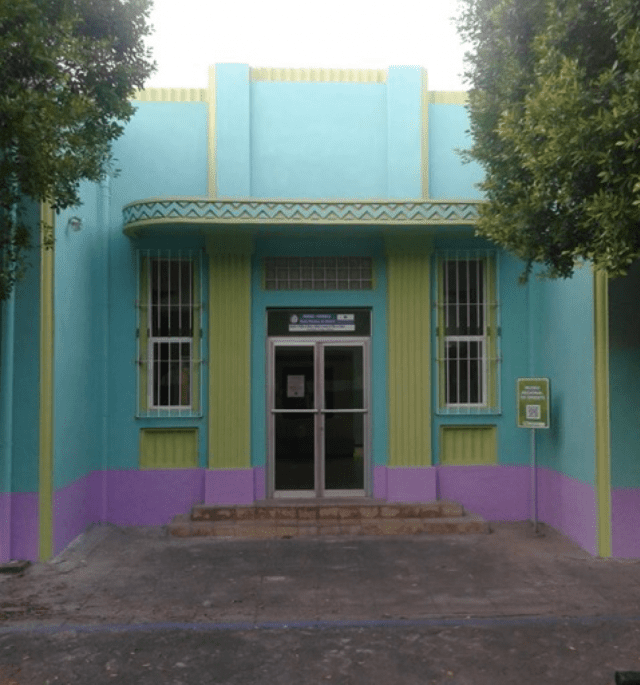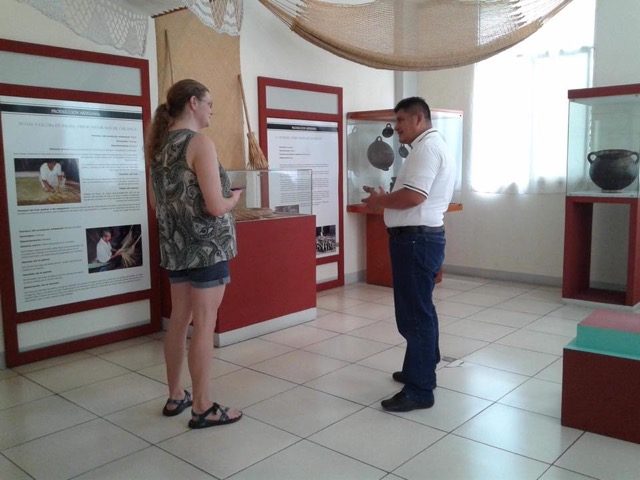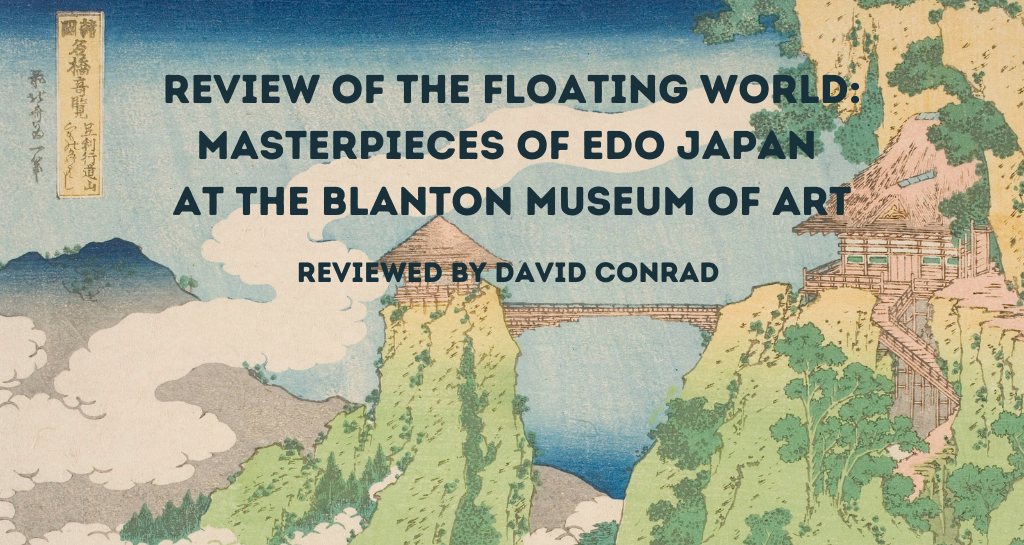
The Floating World: Masterpieces of Edo Japan from the Worcester Art Museum, Blanton Museum of Art, The University of Texas at Austin,
Over one hundred ink-and-paper survivors from “the floating world” of Edo-period Japan are on display at the Blanton Museum in Austin, Texas. This diverse collection of woodblock prints, many of them strikingly colorful despite the passage of two centuries or more, debuted on February 11, 2024, and will close on June 30, 2024. Like spring’s short-lived cherry blossoms, these ukiyo-e masterpieces will not appear in public again for a long while and never in quite the same splendid arrangement. On the drizzly April day, I viewed them, the exhibit space was especially crowded, as eclipse-watchers who’d traveled to Austin for the celestial event rounded out their trips with a weatherproof indoor spectacle. A woodblock print exhibit may not be quite as rare as a Texas eclipse, but it’s rare enough that you don’t want to miss it.
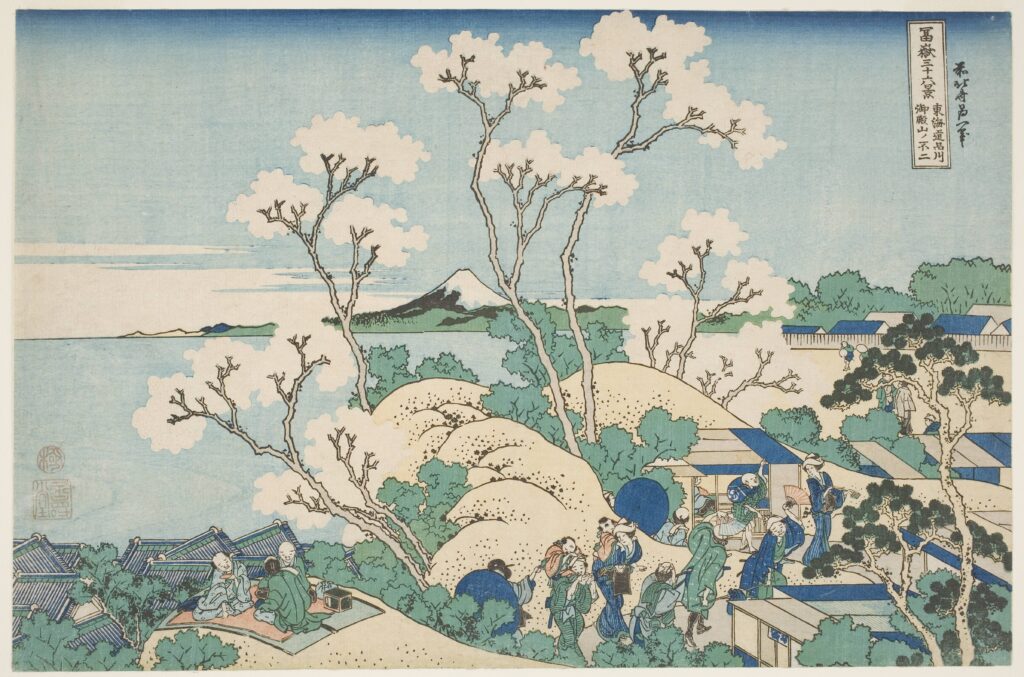
The Japanese phrase ukiyo-e translates to “pictures of the floating world,” a reference to the almost otherworldly pleasures of Edo (now Tokyo) during the relatively peaceful, prosperous, and cosmopolitan 17th, 18th, and 19th centuries. It was peaceful because the Tokugawa clan, the last shogunal dynasty, had emerged victorious in the great battles for supremacy that took place at the end of the sixteenth century. It was prosperous because the shogun required Japan’s many regional lords to make biannual pilgrimages to Edo, ensuring steady business for the city’s merchants. It was cosmopolitan because, despite severe restrictions on foreign trade, ideas from the other side of the world trickled through to the capital and influenced its now-iconic artwork in ways this exhibit makes clear. Most suggestively, Edo “floated” through its golden age because of its courtesans, actors, athletes, festivals, fireworks, gardens, bridges, temples, and breathtaking vistas, both natural and man-made, all of which remain alive for us thanks to the detailed, dreamlike output of the era’s woodblock print masters.
The Blanton’s well-annotated trip through the floating world plays out in five thematic sections, though there is some inevitable overlap between them. The first and smallest, Origins, introduces the time, place, and, critically, the technique of woodblock printing. A final ukiyo-e print was the work of about four people: a designer, a carver, a printer, and a publisher. To illustrate their craftsmanship, Texas artist Daryl Howard offers an introductory display – a work of art in its own right – that breaks down the process. First, each layer of the image is carved into a wood block (backward from how it will appear on paper). Next, colorful ink is brushed onto the wood blocks. The paper is then pressed onto the blocks, one after another, resulting in a layered, multicolored final image.
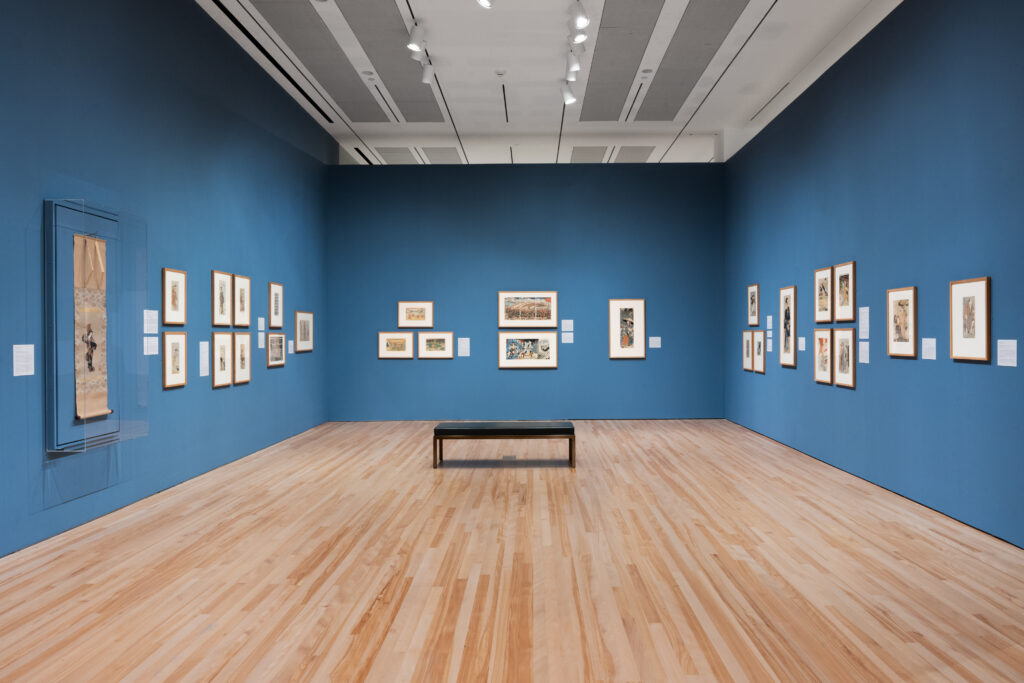
Over time, ukiyo-e artists increased the number of layers and colors. The colors themselves changed over time, as when a new and longer-lasting chemical formula for “Prussian blue” arrived in Japan via Dutch sailors. Some woodblock artists were keen to experiment with foreign techniques like one-point perspective. As the Edo era approached its violent end, prints sometimes depicted foreign gunboats flying foreign flags with foreign crews. Yet, for the most part, both the style and the content of ukiyo-e prints remained decidedly local.
The second part of the exhibit, Entertainment, shows the many ways the people of Edo amused themselves. Prints depict frolics under spring cherry blossoms, summer fireworks, autumn foliage, and winter snow. In one large triptych, people go pleasure boating under a landmark Edo footbridge. It also seems strikingly familiar. As curator Holly Borham points out, scenes like this happen almost daily a few blocks south of the Blanton on Austin’s Ladybird Lake. There are also prints detailing the military prowess of the samurai caste, but with the absence of battles under Tokugawa rule, martial pomp takes on a playful quality. Warriors throw themselves into a fray against a wild boar, they practice archery for sport, and children reenact military parades. Right alongside elite samurai, and seemingly even more celebrated and coveted, are prints of famous kabuki actors and sumo wrestlers. “Candid” illustrations of entertainers’ private lives, as they relax at home with family, seem to prefigure a later century’s magazine spreads.
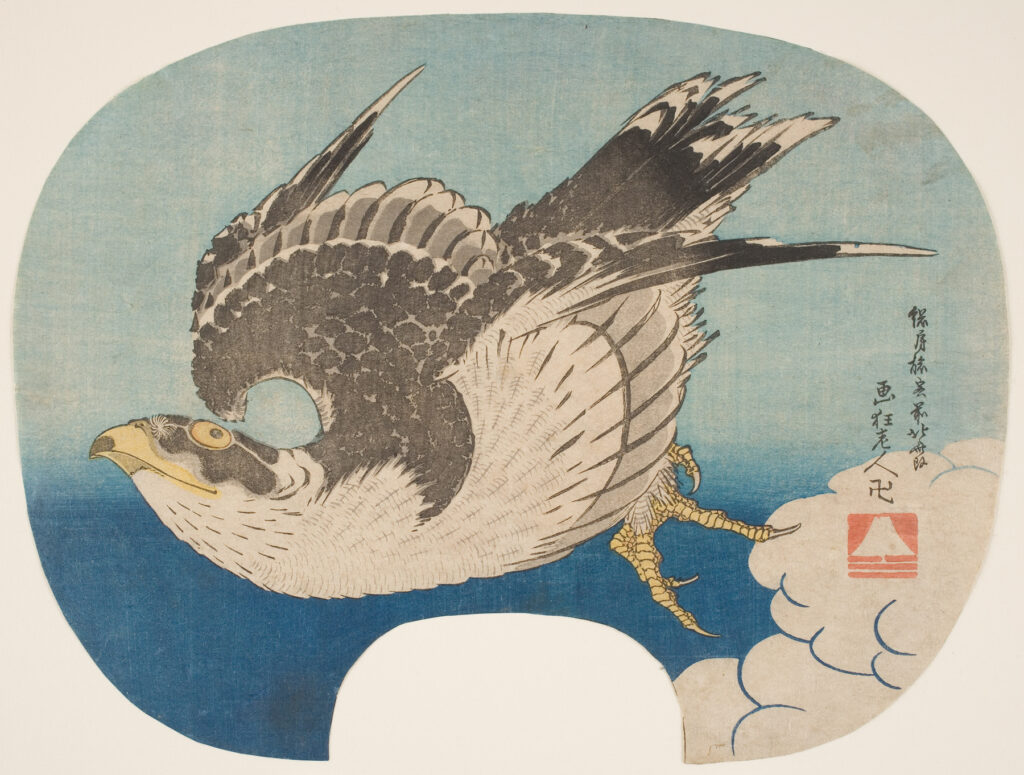
Part three of the exhibit, Poetic Pictures, shows one of the social functions of ukiyo-e as a platform for celebrating ideas. While woodblock prints were first and foremost decorative objects, some of them contain substantial text. Poetry clubs and other groups of literati could commission prints to commemorate their contests and events. Occasionally, the Japanese language’s complex kanji characters are accompanied by furigana, simpler characters to aid pronunciation, but the majority of prints assume a high degree of literacy on the part of their audience. This fact alone speaks volumes about the social world of Edo, as peace and prosperity facilitated education for men and women alike. Don’t worry if your archaic Japanese is rusty – the exhibit’s explanatory panels are generous and in plain English.
As the first three parts of the exhibit show, contemporary earthly pleasure is a far more common subject in ukiyo-e than religion, history, or myth, but the Blanton also spotlights some of the movement’s most interesting counter-programming. The famous artist Utamaro found himself in prison after violating the shogun’s prohibition against depicting the 16th-century warlord Toyotomi Hideyoshi, who had a complex relationship with the Tokugawa family that deposed his son. Gods, monsters, demon-slayers, and ghosts also appear occasionally, though in keeping with the recreational spirit of the era, several of these are actually depictions of stage plays about the supernatural. Playful monkeys, brash roosters, and fearsome dragons also rear their heads, sometimes in reference to the zodiac but often as supporting players in anthropocentric scenes.
The fourth section, Landscapes and the Natural World, contains some of the best-loved examples of the ukiyo-e art form. Here you can soak in several large, vivid pieces from two legendary printmakers whose work has inspired generations of designers, travelers, and Japan lovers: Hokusai, creator of the 36 Views of Mt. Fuji series, and Hiroshige, the artist behind the 100 Famous Views of Edo series. The Blanton exhibit boasts examples from each series, and all on their own, they justify fighting Austin traffic.
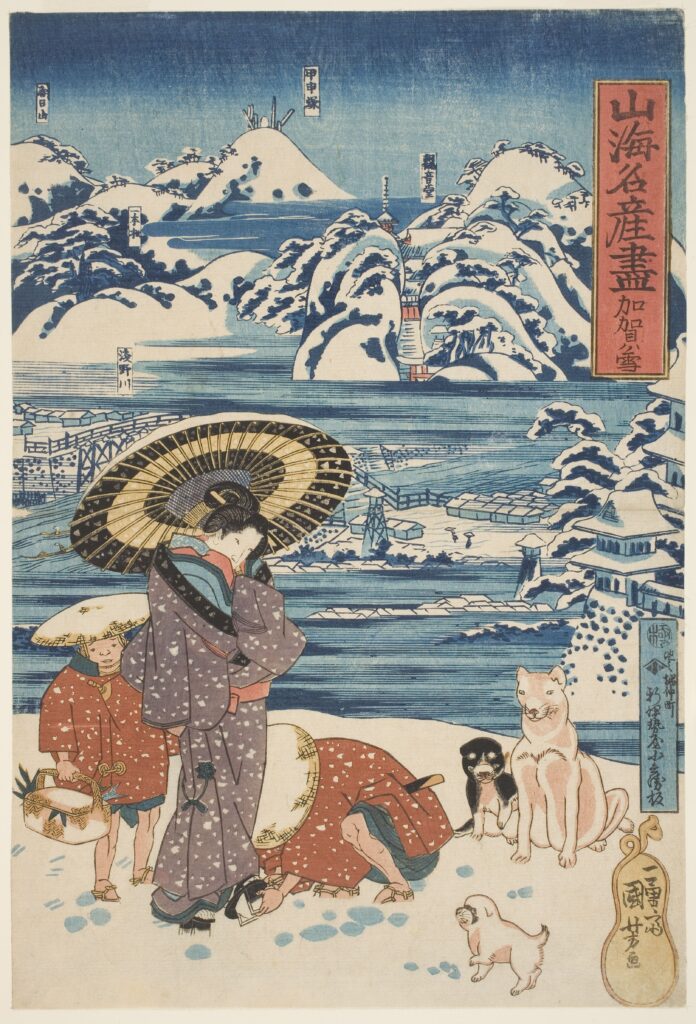
The final part of the exhibit, Bijin-ga, shifts the focus to Edo’s “fashionable beauties.” Geisha, bathers, and hostesses don their makeup or remove their robes, chat with each other or gaze into mirrors, and relax outside their workplaces or take seaside strolls. A close look at their kimono reveals stunningly intricate patterns. Their possessions and surroundings hint at Edo’s vast marketplaces and vibrant consumer culture, and at the goods and services that were coveted and accessible in Japan’s booming capital. One of my favorite surprises was a rare print by Hokusai in the shape of a folding fan. Since it was meant to attach to a fan and would have become heavily creased through regular use, few examples survive.
This temporary exhibit has drawn admirers from across the UT community, including art students, textile makers, and students of Japanese language and history. This is the Blanton’s first Japan-focused exhibit in many years, and when it finishes its run, the prints will return to their permanent home at the Worcester Museum in Massachusetts. To preserve their color, the prints can only go on display for a few months at a stretch and only three times in a 10-year period. To see so many in one place and so well-arranged and annotated is a singular experience. Look in on the floating world while it lasts.
David A. Conrad received his Ph.D. from UT Austin in 2016 and published his first book, Akira Kurosawa and Modern Japan, in 2022. He is currently working on a second book, which will also focus on postwar Japan. David lived in Japan’s Miyagi prefecture for three years and can’t wait to go back to his home away from home.
The views and opinions expressed in this article or video are those of the individual author(s) or presenter(s) and do not necessarily reflect the policy or views of the editors at Not Even Past, the UT Department of History, the University of Texas at Austin, or the UT System Board of Regents. Not Even Past is an online public history magazine rather than a peer-reviewed academic journal. While we make efforts to ensure that factual information in articles was obtained from reliable sources, Not Even Past is not responsible for any errors or omissions.

